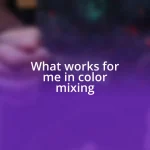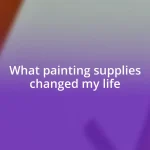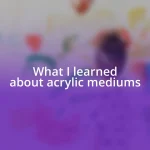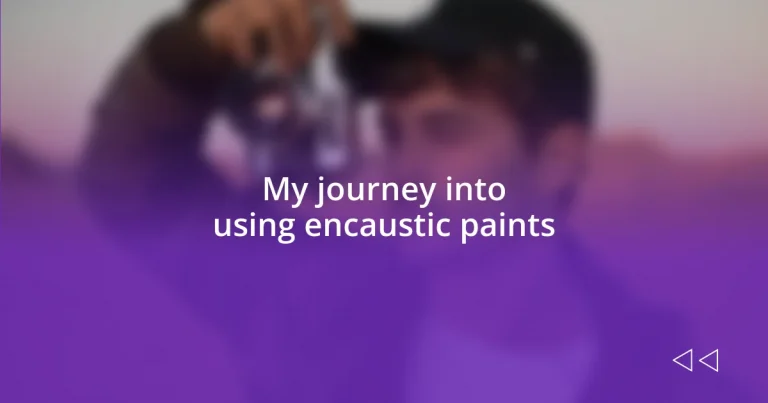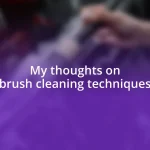Key takeaways:
- Embracing experimentation in encaustic painting can lead to unexpected and delightful artistic results.
- Proper surface preparation and temperature control are crucial for achieving desired effects and avoiding common issues.
- Layering techniques and incorporation of mixed media enhance the depth and richness of encaustic artworks.
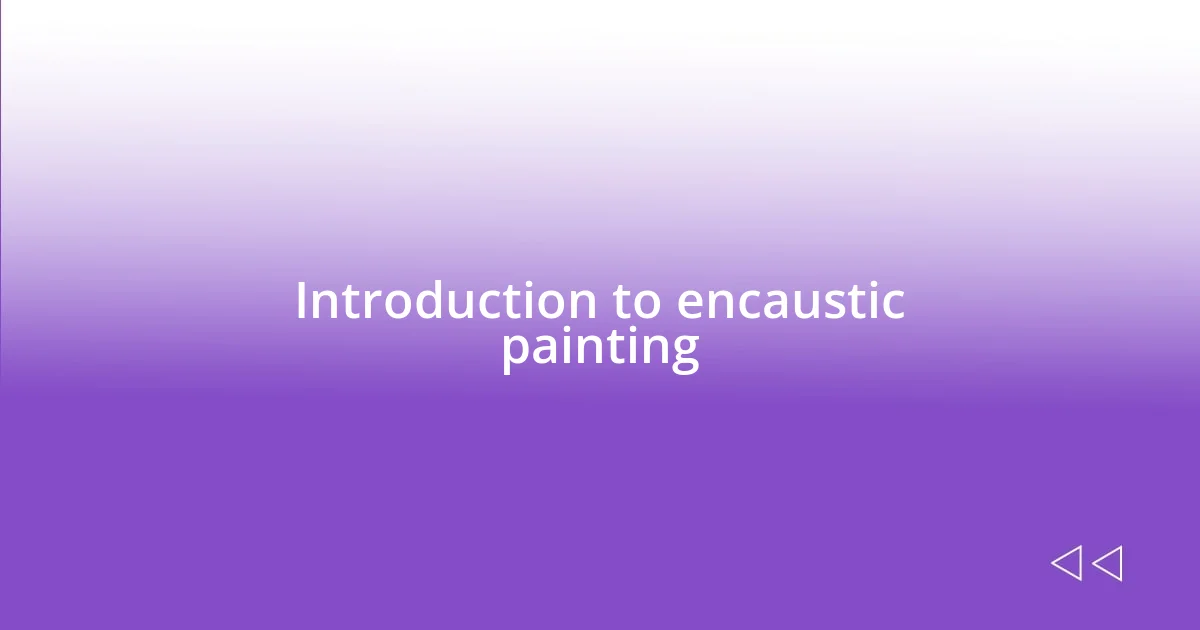
Introduction to encaustic painting
Encaustic painting is a fascinating medium that combines pigment with hot wax, creating a unique texture and depth unlike any other form of art. I remember my first encounter with encaustics during a workshop where the air was thick with the scent of melted beeswax—a sensory experience that instantly captivated me. It’s a medium that not only invites creativity but also challenges artists to think about layering and temperature in ways I had never considered before.
Diving into encaustics felt like embarking on a new adventure. I often found myself asking, what can I unearth beneath those waxy layers? This curiosity propelled me to experiment, discovering hidden colors and patterns as I built up the surface. Each brush stroke felt like a dialogue with the materials, and I quickly learned that the beauty of encaustic painting lies in its ability to transform even mistakes into opportunities for innovation.
What truly sets encaustic painting apart is its rich history—it dates back to ancient civilizations, with the Greeks creating beautifully detailed works with this technique. This connection to the past added a layer of excitement for me; I was not just painting, but rather participating in a tradition that has captivated artists for centuries. The thrill of merging contemporary creativity with age-old methods feels empowering and reminds me of how art transcends time, inviting everyone to leave their mark.
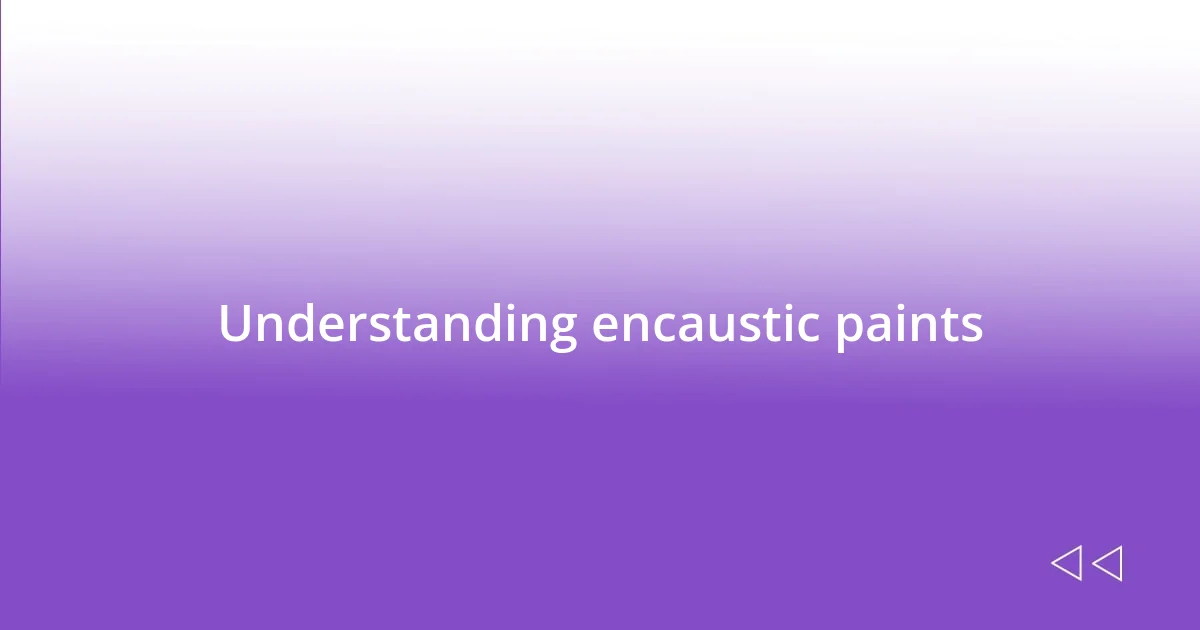
Understanding encaustic paints
Understanding encaustic paints is essential for anyone looking to dive into this unique art form. The wax base gives encaustics their signature malleability and luminosity, allowing artists to create stunning effects. I distinctly remember the moment I realized how versatile the medium could be; while playing with heat control, I discovered that varying temperatures could create everything from smooth surfaces to intricate textures.
Here are some key facts about encaustic paints:
- Composed mainly of beeswax, resin, and pigments
- Must be heated to around 70°C (160°F) to melt and apply
- Can be layered and manipulated with tools like brushes and blowtorches
- Offers a unique luminosity and depth thanks to its transparent properties
- Is compatible with various techniques, including collage and mixed media
My initial attempts felt chaotic as I navigated the melting process. I vividly recall the first time I touched a textured piece—an unexpected ripple of excitement coursed through me! Each layer I added seemed to tell its own story, and I began to appreciate how encaustics encourage a conversation between the artist and the materials. This interplay cultivates a sense of discovery that feels deeply personal, making it a compelling journey for any aspiring artist.
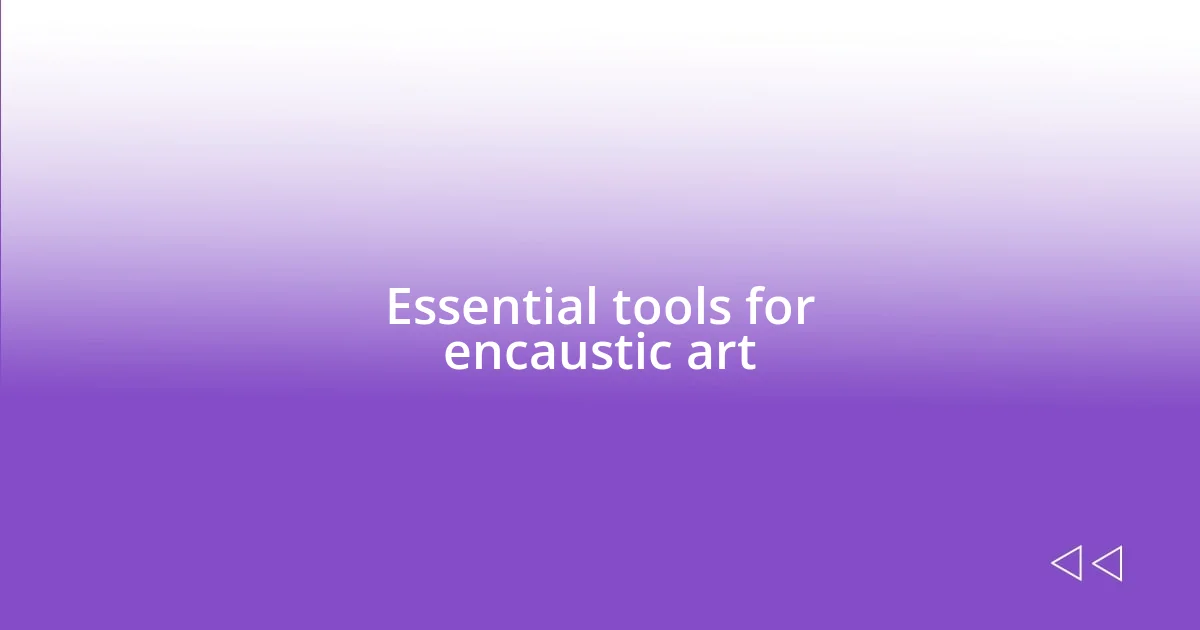
Essential tools for encaustic art
When it comes to encaustic art, having the right tools is crucial for bringing your vision to life. My very first setup was simple but effective, including a heating element, a variety of brushes, and a palette. I remember the thrill of unwrapping my first set of encaustic brushes—there’s something about the soft bristles and sturdy handles that sparks excitement. The brushes allow for such fluid movement across the wax, making each stroke distinct and purposeful.
In addition to brushes, a heat gun or a hot plate is essential for melting and manipulating the wax. I’ve always relied on my trusty heat gun, which quickly became my best friend. At times, I found myself lost in the mesmerizing way the wax dripped and flowed with the right amount of heat—it’s almost meditative. Experiencing the transformation of firm, just-applied wax into an ethereal and fluid form was a revelation.
Don’t forget to invest in some good quality encaustic medium. Through trial and error, I discovered that the quality of wax significantly impacts the final result. Lower quality brands often led to frustrating experiences, resulting in brittle layers or odd colors. This journey taught me to appreciate the art of selection—not just of colors, but also of materials that resonate with the artistic experience one wishes to create.
| Tool | Purpose |
|---|---|
| Heating Element (Heat Gun/Hot Plate) | Melt and manipulate wax |
| Brushes | Apply wax with different textures and styles |
| Palette | Mix and hold wax during work |
| Spatula/Palette Knife | Scrape and carve into layers |
| Encaustic Medium | Foundation for creating paintings |
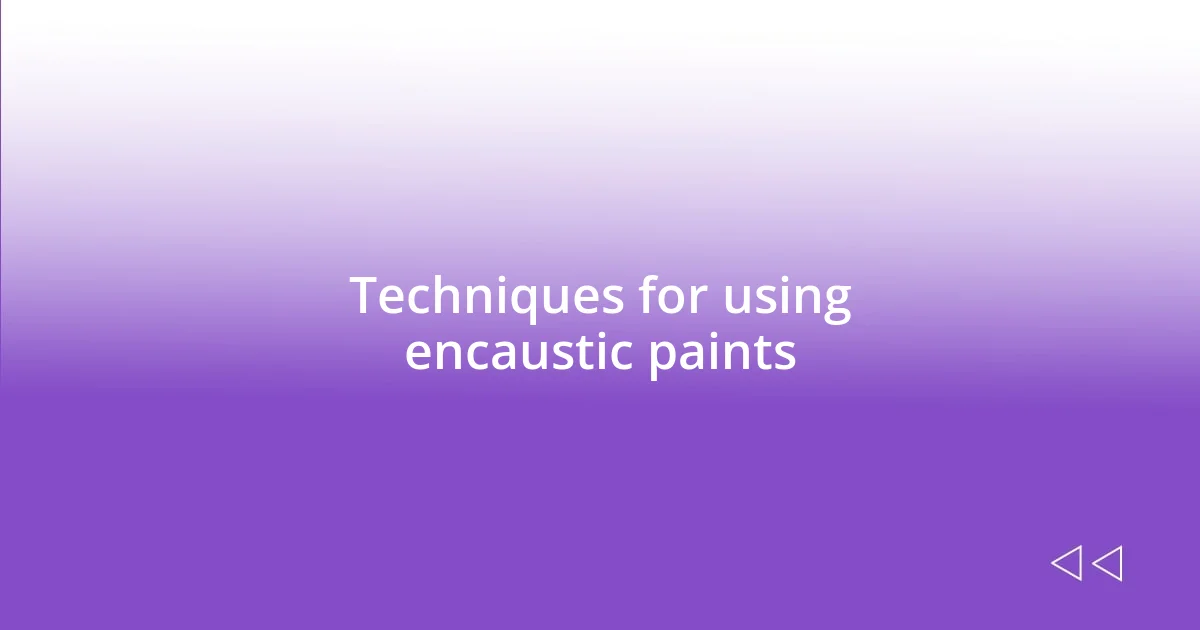
Techniques for using encaustic paints
In the world of encaustic painting, layering is an essential technique that I grew to love. I remember the excitement of stacking layers upon layers of wax and watching the colors merge, each layer seeming to whisper its own story. Did you know that each subsequent layer can change the overall hue and texture? I often lost track of time as I experimented, particularly with creating depth by partially scraping back layers to reveal what lay beneath, like unearthing hidden treasures.
One technique that surprised me was using stencils to add patterns and designs. I stumbled upon this method while seeking ways to make my work more dynamic. I felt a rush of creativity when I placed a simple stencil over a warm layer and applied a contrasting wax color. The results were striking—my dull canvas transformed into something vibrant within moments. It was a revelation that showed me how the simple act of layering and manipulation could yield vivid, exciting outcomes.
I also found that bringing in mixed media elements, like incorporating torn papers or metal leaf, enriched my encaustic works immensely. Initially, I was hesitant, unsure how these materials would interact with the wax. Yet, the moment I embedded a piece of textured paper into the melted wax and saw how it held its place, I felt a surge of inspiration. It opened up a new realm of possibilities, making me wonder: what other treasures could I introduce to my encaustic journey? Embracing varied materials transformed my artistic approach, driving home the importance of experimentation in this medium.

Tips for successful encaustic projects
One key tip for successful encaustic projects is to always work in a well-ventilated area. I learned this the hard way during my early sessions when I was too absorbed in the excitement of the process. There’s something invigorating about the smell of melted wax, yet I quickly realized that prolonged exposure could be overwhelming. I now ensure that my workspace is airy, allowing me to focus solely on my creativity, rather than worrying about discomfort.
Another crucial point is to have patience. At times, I found myself rushing to achieve a desired effect, only to be disappointed with the results. I’ve come to appreciate the beauty in slow layering and allowing each segment to cool properly before adding the next. It’s much like cooking; sometimes you need to let flavors meld to create that perfect dish. Have you ever tried to rush a recipe? The same mantra applies beautifully in encaustic art.
Finally, don’t shy away from mistakes. Early on, I was paralyzed by the fear of making an error, thinking it would ruin my piece. However, I discovered that some of my most cherished projects came from unexpectedly happy accidents—those moments when the wax didn’t behave as I planned but instead produced an effect that caught my eyes. Embrace those surprises; they often lead to your most authentic expressions in art. Have you ever felt liberated by an unexpected twist? It’s a thrilling realization that can redefine your artistic journey.
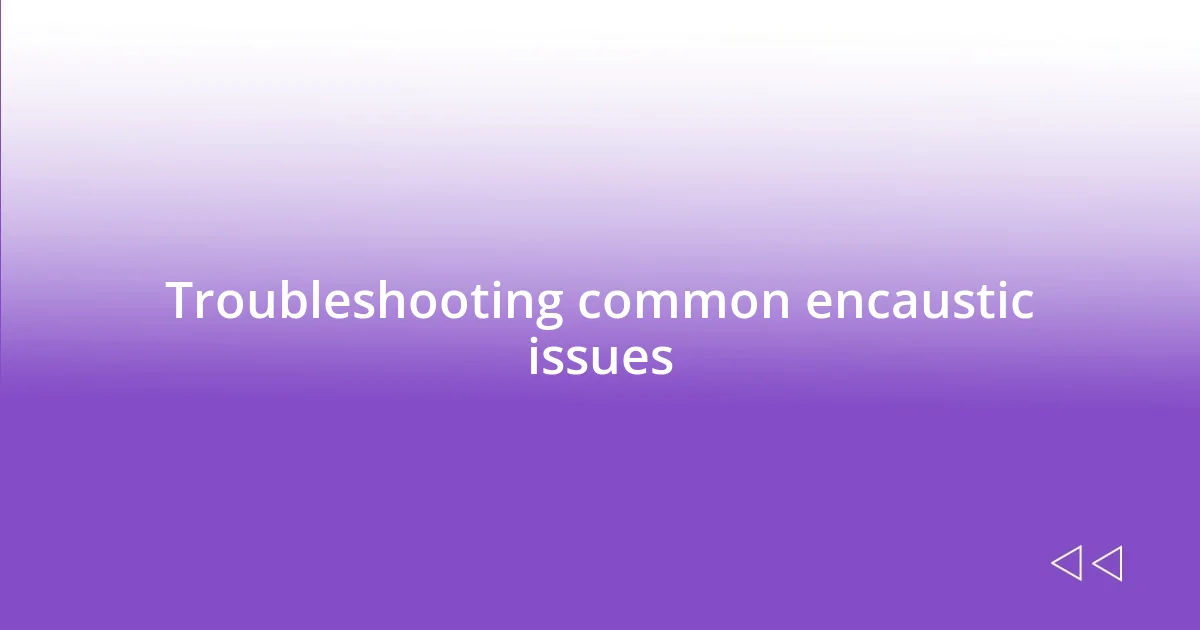
Troubleshooting common encaustic issues
When working with encaustic paints, one common issue I encountered was uneven surfaces. I remember a piece I was excited about that ended up looking bumpy after layering. It was frustrating, but I learned that using a heat gun to gently rewarm the surface could help level out those inconsistencies. Have you ever faced a similar mishap? Knowing that a quick fix is often just a gentle touch away can be reassuring.
Another challenge I wrestled with was wax that refused to adhere properly to my substrate. Initially, I thought it was a product flaw, but I soon realized I hadn’t prepared my surface adequately. I vividly recall my struggle with a canvas that I had primed but didn’t sand down. The wax just slid right off! A simple sanding step made all the difference, allowing the wax to grip tightly. It was a valuable lesson in surface prep—sometimes, the smallest steps can lead to the most significant outcomes.
Finally, there’s the issue of color preservation. I once completed a vibrant painting only to see the colors dull unexpectedly after cooling. It was disheartening until I discovered the importance of keeping each layer at the right temperature. I learned to keep a close eye on my wax, ensuring it remained at an optimal melting point while still allowing deeper shades to shine through. Have you experienced a color surprise with your work? Finding the balance between heat and vivid hues is key to creating pieces that maintain their brilliance over time.

My personal encaustic experiences
I remember the first time I dipped my brush into melted encaustic paint. The anticipation was palpable as I spread the wax over my canvas, creating a texture that felt alive. It was overwhelming in the best way, yet I quickly learned about the importance of temperature. Have you ever been too eager and watched something you love melt away? I certainly felt that anxiety as I realized that a lower melting point could lead to a soupy mess instead of the crisp, defined lines I was aiming for.
As I continued on my encaustic journey, I stumbled upon the magic of embedding materials into my artwork. One day, I decided to incorporate dried flowers into a piece, but the smell of melting wax was so intoxicating that I forgot to space them properly. When I lifted the final artwork, it had transformed into a tapestry of colors and botanicals that made my heart skip a beat. Have you ever fallen in love with the unexpected look of something you created? That piece became a cherished reminder that experimentation can lead to delightful surprises if we’re willing to embrace the imperfect.
I also had a moment of clarity when experimenting with layering colors. At one point, attempting to create deep shadows, I realized my layers weren’t blending as I envisioned. After some trial and error, I discovered that lightly fusing layers with a heat tool was the key. It struck me how similar this was to relationships; just as we blend and fuse with others, art needs that gentle heat to connect. Have you noticed how sometimes, the best relationships come from blending different lives together? That realization transformed my approach, leading me to create pieces that were more than just layers of wax; they became intricate stories told through color and texture.
